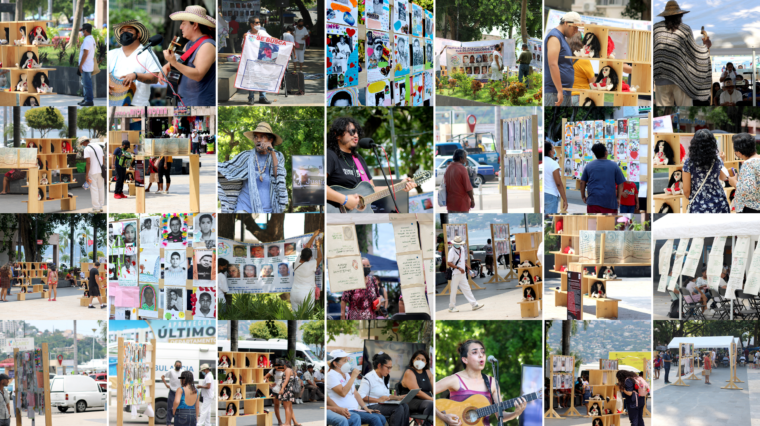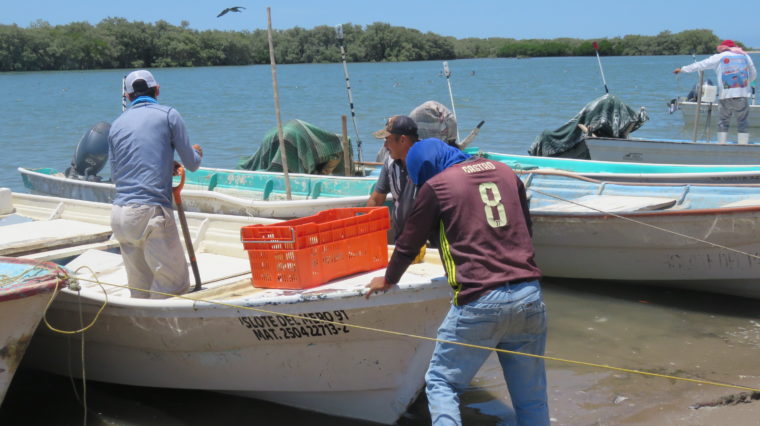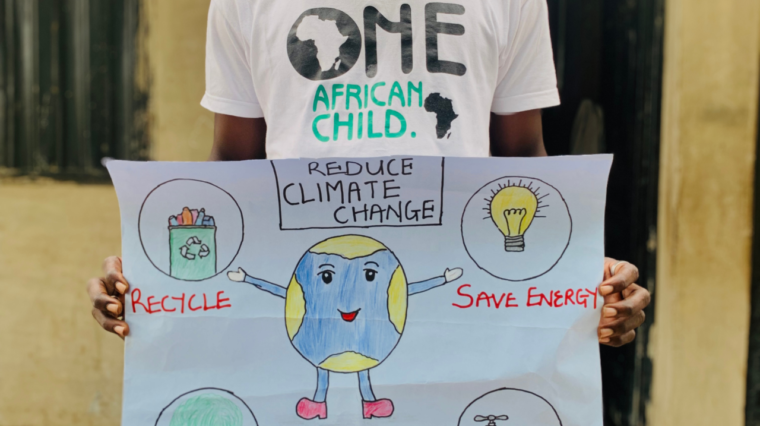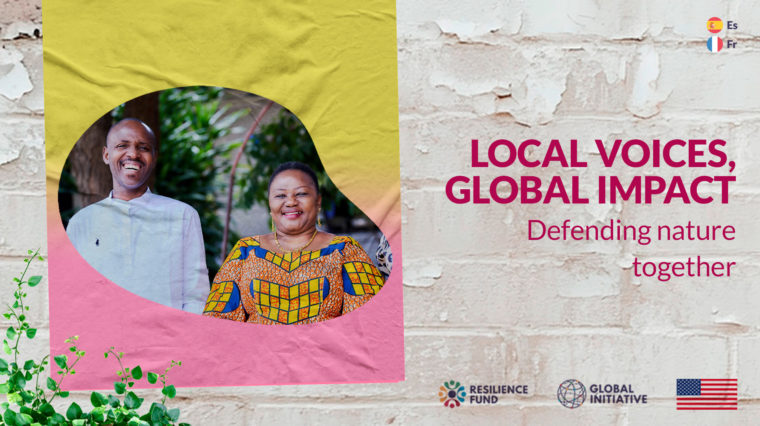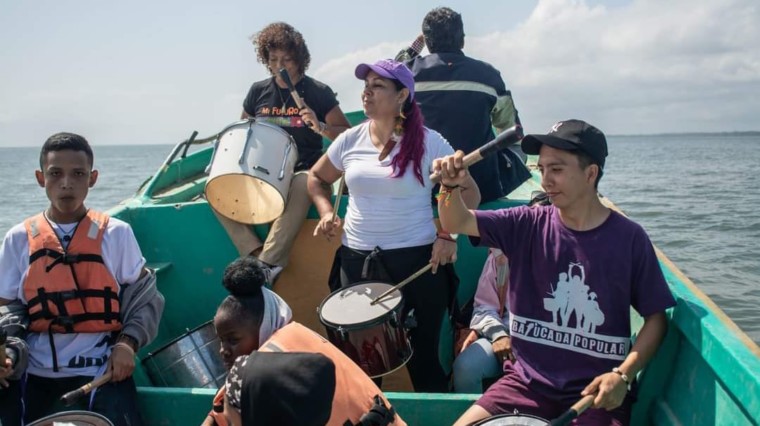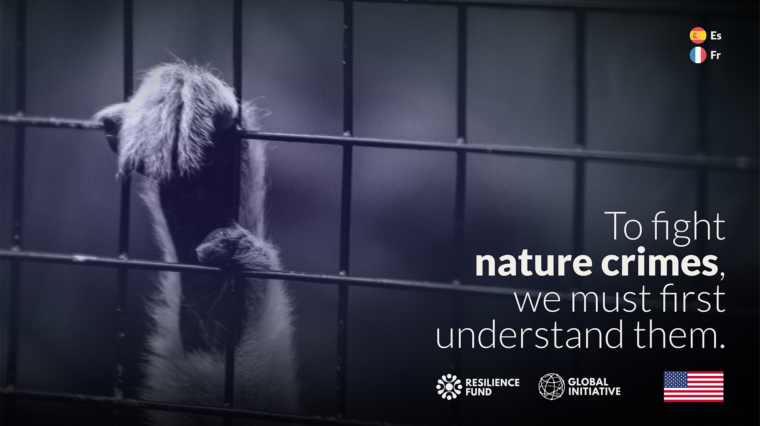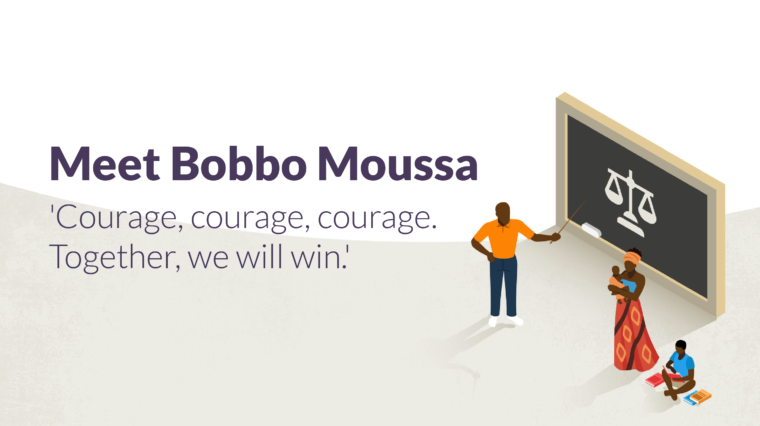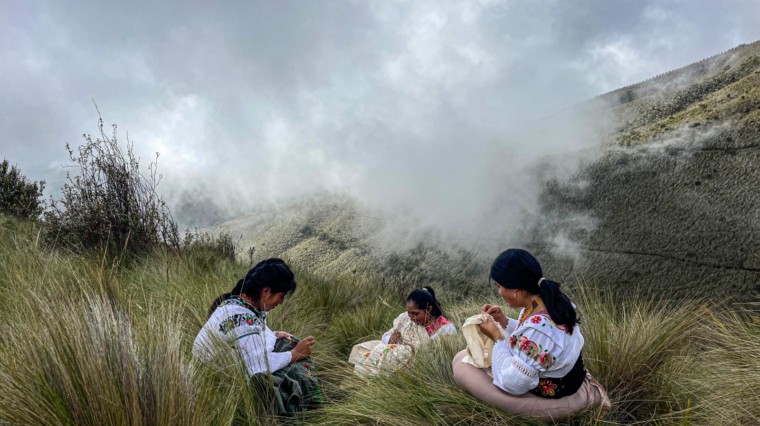Enforced disappearances: Who is the real perpetrator?
Published on August 28, 2020
On the international day to commemorate the victims of enforced disappearances, we open the debate about the current role of organized crime in the international legal framework and the need to ensure protection for a growing number of victims.
On 27 January 2017, Reyes Yosimar García, a young police officer in Culiacán, Mexico, was kidnapped from his home by an armed group. When his mother, María Isabel Cruz, approached the authorities for help, they did nothing. She then decided to search for Yosimar on her own.
A few months later, María Isabel founded a collective called Sabuesos Guerreras (female warriors) with eight other women who had also lost their children. Today, the group represents the families of almost 400 people who have disappeared in the state of Sinaloa, which has the second highest number of clandestine graves in Mexico. The federal government’s National Search Commission has registered 3 978 clandestine burial sites where 6 625 bodies have been recovered.
María Isabel and her collective take credit for identifying more than 15 000 human remains. Since they began this work, these mothers have been menaced, harassed, bullied, and dismissed by the authorities and criminals alike. Despite the threats, they have persisted, even during the pandemic, picking up sticks and shovels and searching through garbage dumps, fields, rivers – and any place that offers them the slightest possibility of finding their loved ones.
Their risks have only increased in the ‘new normal’ of the pandemic. Previously, groups of 15 to 20 people would search for the lost ones twice a week; now smaller groups go out just once a week. They may be able to protect themselves from the coronavirus with masks and bodysuits, but they are increasingly vulnerable to gunmen, who often threaten them when they visit remote places. Before the pandemic, federal authorities had assigned guards to protect them, but since the beginning of the health crisis they have been on their own. It doesn’t deter them, and over the last few months they have found 10 bodies.
Official data shows that, since 1960, 73 201 people have been declared as missing in Mexico. During the 1970s and 80s, disappearances were linked to the so-called Dirty War. During this period, more than 500 disappearances were attributed to government authorities and other state-sponsored groups targeting political opponents, members of guerrilla groups or leftist movements.
However, the overwhelming majority of people in Mexico have gone missing over the last decade, since the government declared its war on drugs and the concomitant growth of criminal organizations across Mexico, both in numbers and power.
International law and its instruments recognize disappearances through state involvement; however, the international community can generally hold states accountable only if enforced disappearances are proven. This makes numerous cases, like those of María Isabel Cruz and her companions in Sabuesos Guerreras, difficult to categorize as enforced disappearances. People in these contexts continue to disappear in large numbers at the hands of non-state armed and unarmed groups, often diminishing the resources available for these victims’ protection.
Enforced disappearances and organized crime
The history of enforced disappearances and international laws around it are rooted in the dictatorial regimes of Latin America in the 1960s. State authorities would ‘disappear’ people strategically to suppress political opponents and instil widespread fear. Victims were identified, detained, tortured and extrajudicially executed. As enforced disappearances escalated in the region, victims’ families and regional institutions, such as the Inter-American Court of Human Rights, pressured the international community to create and adopt the International Convention for the Protection of All Persons from Enforced Disappearances (ICPPED).
The ICPPED is a landmark instrument to combat enforced disappearances perpetrated directly by the state and its officials. It clarifies the nature of state involvement in its definition, as set out in Article 2:
‘Enforced disappearance’ is considered to be the arrest, detention, abduction or any other form of deprivation of liberty by agents of the State or by persons or groups of persons acting with the authorization, support or acquiescence of the State, followed by a refusal to acknowledge the deprivation of liberty or by concealment of the fate or whereabouts of the disappeared person, which place such a person outside the protection of the law.
This definition was inspired by other international instruments, such as the 1992 UN Declaration, the Inter-American Convention, and the definition used by the United Nations Working Group on Enforced and Involuntary Disappearances.
However, the reality on the ground is different from the instruments such as the ICPPED, as reflected in María Isabel’s case. The emphasis on state involvement fails to take into account the myriad of criminal contexts in which most disappearances occur, from the illicit drug trade to human trafficking.
When the ICPPED convention was being drafted, non-state actors as perpetrators of enforced disappearances were considered, but many delegations opposed it. They justified this by arguing that the enlarged scope of the instrument could undermine the force of the convention and change the nature of the crime, which primarily needed to have a state component. The solution, then, was the inclusion of Article 3, which imposes an obligation on states to investigate the behaviours defined by Article 2 but committed by non-state actors.
A major issue with this provision, though, is that proving state involvement depends entirely on evidentiary standards, which differ from case to case, forcing victims to rely on the state’s willingness to investigate a disappearance. Recognizing that enforced disappearances occur provides victims with specific mechanisms that enable them to access justice without relying solely on the state. When a case is categorized only as a ‘disappearance’ or as a ‘missing person’, it loses certain mechanisms to hold even non-state perpetrators accountable.
Organized crime is responsible for the high number of disappearances in Mexico, but not all can be categorized as enforced disappearances. In 2014, 43 students from Ayotzinapa, Guerrero, disappeared after clashing with the municipal police. The case has been internationally acknowledged as an enforced disappearance but, after almost six years since that horrific episode, the current federal administration is yet to serve justice.
Undoubtedly, international pressure brought to bear on this case has impelled the authorities to continue investigations. However, in thousands upon thousands of other disappearances, authorities have been quick to dismiss the victims’ families and avoid investigations. When approaching the police, mothers of young men are invariably told that their children were probably members of criminal groups who have been kidnapped by rival gangs. This is the harsh reality in Mexico that has led to the growth of many collectives such as Sabuesos Guerreras.
Groups of non-state actors operate in different ways and diverse contexts, which will trigger different levels of state involvement. These groups may act autonomously, exercise state functions and/or control the territory. In some situations, state involvement can be quite clear; in others, non-state actors work with the support of states and private criminal gangs where the nature of state involvement is ambiguous, such as in the case of powerful Mexican criminal syndicates. This is a grey area in the legal framework. Armed and criminal groups may act independently and pursue private interests when ‘disappearing’ people, but their ability to do so with impunity may imply state tolerance of their criminal activities, or may indicate that criminals are disappearing people in collusion with the authorities.
Disappearances worldwide
Contemporary forms of disappearances around the world increasingly show the relevance of revising how we understand the role played by non-state actors and, in particular, organized criminal groups in these acts. In 2020, the Resilience Fund launched its first fellowship programme to support multi-disciplinary transnational collaboration among individuals building resilience to organized crime at the local level around a global theme. The theme this year is disappearances, which offers an opportunity to understand this phenomenon and its relationship to criminal non-state actors. More than 330 fellowship applications from 67 countries represented the variety of contexts that enable disappearances to occur. From the disappearance of indigenous leaders and kidnappings of migrants for ransom to abductions of children for the purpose of trafficking, these contexts are ever nuanced and often disjointed from the definitions contained in international instruments.
The 2020 Resilience Fellows include activists, journalists and artists from Cambodia, Colombia, Democratic Republic of Congo, Kenya, Mexico, Niger, Philippines, Romania and Venezuela. Their work illustrates the broad spectrum of disappearances happening today and how the phenomenon is closely related to organized crime. The role played by criminal organizations in disappearances is evident in some of the fellows’ communities – such as Mexico – but this link is less apparent in other contexts, which involve paramilitary forces, corrupt authorities or the interest of private businesses.
Over the past six months, the fellows have addressed the definition of enforced disappearances. They have compared definitions used by international instruments with their own realities, detailing the victims and perpetrators in their communities. They have shared their findings with other fellows to learn about their searching strategies, their coping mechanisms and even their own protection. This is an ongoing dialogue that involves other experts from the GI-TOC network and other international agencies, through virtual sessions intended to build capacity and raise awareness of new perspectives. And one thing has become clear through these multiple conversations: in the diverse scenarios in which disappearances are taking place around the world, there is room for more debate about the role of non-state actors, especially in complex settings of criminal governance, where the lines between legitimate and illegitimate force become blurred.
The ICPPED’s definition of enforced disappearances mirrors previous instruments by allowing the possibility of framing some acts committed by private groups as enforced disappearances. However, this possibility depends on how the concept of acquiescence is interpreted to include a broader set of non-state actors as perpetrators. As mentioned, international law requires state involvement to be established in order to trigger Article 2 of the convention. Since the onus is on the state to hold non-state actors accountable, would omission in taking preventable action or investigating cases in areas notoriously dominated by organized crime be considered acquiescence?
The crucial point to understand is whether this definition is flexible enough to include state-sponsored groups or private criminal groups acting for private purposes as direct perpetrators of enforced disappearances on the basis of acquiescence.
A definition for justice
María Isabel Cruz believes that, in her case, the authorities are guilty of acquiescence. Her own investigation has revealed that her son’s disappearance was in retaliation for his supporting the army during an attack against a criminal group. According to Cruz, all the policemen who had been involved in the same operation as her son either disappeared or were killed as a deliberate attempt to erase the testimony of the attack. She denounces the state for refusing to investigate the link between these disappearances, and she believes that they are trying to hide something.
She says that proving her case as an enforced disappearance under the current legal framework has been arduous and near-impossible, and that ‘international organizations only listen to what government officials say, and [the authorities] lie, they manipulate the truth to look good’. She suggested that any international mechanism ‘should give the same value to the testimonies of the families, who are the ones continuing to investigate the truth’.
The victims of disappearances are not just the tens of thousands of people who have been declared as missing all over the world, but also their families and entire communities, who are terrorized by the effects of this terrible crime. Disappearances are an eternal punishment for families who cannot achieve closure until they know the whereabouts of their missing members, and are continuously revictimized by the indifference of the legal framework. As María Isabel said: ‘Criminals disappeared our children and now the authorities want to disappear us, making us invisible.’ This is why she continues to tirelessly protest and advocate with other collectives in Mexico.
At the international level, a stronger recognition of the role played by organized criminal actors in disappearances could open up a space in global policy to take account of a wider number of victims who are overlooked under the ICPPED convention. It is critical to set standards of proof with the aim of labelling actions perpetrated by non-state actors as enforced disappearances, so as to strengthen the protective framework and fight impunity. We urgently need to start this dialogue and include those who are missing in order to find justice for all the disappeared.
Written by Siria Gastélum Félix with contributions by Ana Paula Oliveira
